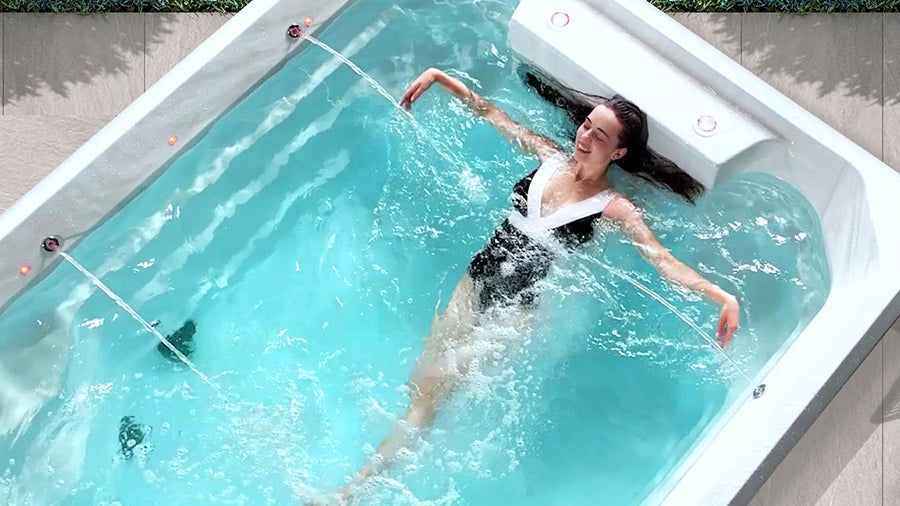Swim spas and regular spas are two popular choices for prospective spa owners. Whether you're seeking a place to unwind or a space for exercise and leisure, knowing the differences between these two options can help you make an informed decision.
What is a Swim Spa?
A swim spa combines the features of a swimming pool and a traditional spa. They have the jets as well as the size to act as both a pool and hot tub. Swim spas are ideal for various exercises, including swimming, water aerobics, and resistance training. Typically, swim spas are larger than regular spas but smaller than conventional swimming pools, providing a multifunctional space for both exercise and relaxation.
What is a Regular Spa?
Regular spas, often called hot tubs, are primarily designed for relaxation and hydrotherapy. They feature multiple jets that deliver a massaging effect, targeting different muscle groups to alleviate stress and tension. Regular spas are usually smaller than swim spas and are focused on providing a therapeutic experience through warm water and jet massages.
Key Differences
-
Purpose and Functionality
- Swim Spa: Swim spas offer both exercise and relaxation. The strong jets create a current for stationary swimming. Additionally, swim spas often include a separate area with jets for relaxation, blending the benefits of a pool and a spa in one unit.
- Regular Spa: The main focus of a regular spa is relaxation and hydrotherapy. The jets are designed to provide therapeutic massages, helping to relieve muscle tension and promote overall well-being. Regular spas are perfect for those looking to unwind after a long day or alleviate chronic pain.
-
Size and Space
- Swim Spa: Swim spas are generally larger, accommodating both a swimming area and a relaxation zone. They can be installed indoors or outdoors, depending on the available space. The larger size makes them suitable for families or individuals seeking a multifunctional aquatic space.
- Regular Spa: Regular spas are more compact and can fit into smaller spaces, making them ideal for patios, decks, or even indoors. Their smaller size makes them easier to maintain and more cost-effective for installation and operation.
-
Installation and Maintenance
- Swim Spa: Due to their larger size and dual functionality, swim spas can be more complex to install and maintain. They require a solid foundation, proper electrical connections, and regular maintenance to ensure the jets and filtration systems operate efficiently.
- Regular Spa: Regular spas are typically easier to install and maintain. They can be portable or built-in, with simpler plumbing and electrical requirements. Maintenance involves regular cleaning, water treatment, and checking the jets and filtration system.
-
Cost
- Swim Spa: The initial cost of a swim spa is generally higher due to its size and multifunctionality. However, it can be a cost-effective alternative to a full-sized pool, offering both exercise and relaxation in one unit.
- Regular Spa: Regular spas are usually more affordable, both in terms of initial purchase and ongoing maintenance. They provide a luxurious and therapeutic experience without the higher costs associated with larger installations.
Conclusion
Choosing between a swim spa and a regular spa depends on your specific needs and preferences. If you want a versatile option that allows for both exercise and relaxation, a swim spa might be the perfect choice. Alternatively, if your goal is to have a relaxing experience, a regular spa will meet your needs. Consider factors such as space, budget, and intended use to make the best decision for your lifestyle.





Share:
How to Use and Maintain Spas Safely
The Benefits of Having Spas with Ozone and UV